South Africa’s creators, coders and founders are under pressure to do more with less. Whether you’re running a meme page from Mitchells Plain, debugging…
Review: VW e-Golf
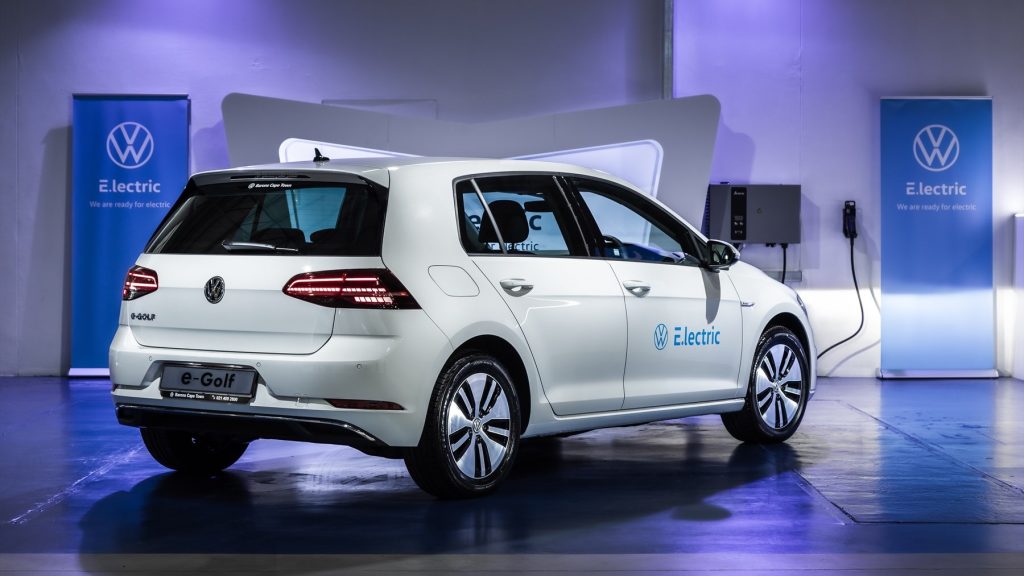
VW’s e-Golf is the very recognisable battery car you can’t buy in South Africa. Despite its ambitious global electric vehicle product renewal, VW doesn’t offer plug-in electric vehicles for local buyers. Yet.
To grade how local customers might respond to a battery-powered VW, the company imported a limited number of e-Golf units and we got to drive one for a week.
An electrified version of VW’s Golf 7, the e-Golf is a strange mashup of discontinued VW bits and new components.
VW invested massively in its MQB platform, which the e-Golf uses. But this vehicle architecture is designed for internal combustion engines, not electrification. To create an e-Golf, VW engineers merely removed the engine and added some batteries, with an electric motor to drive the front wheels.
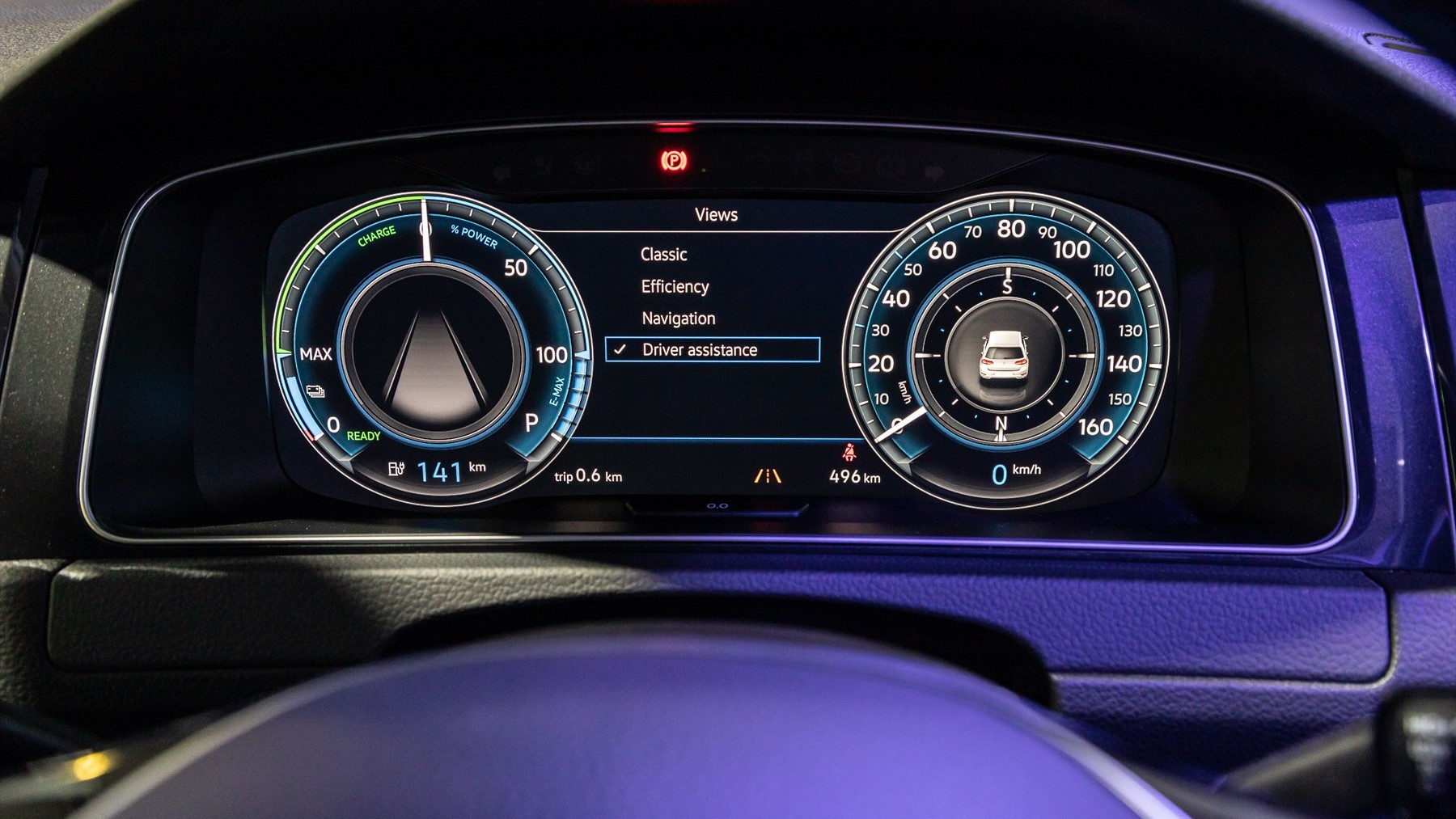
E-Golf is like any other Golf – inside
In theory, a dedicated electric vehicle platform is always superior to any retrofitted battery car. But e-Golf provides evidence to the contrary.
There is a wonderful familiarity with its cabin architecture, drive modes and touchpoints. Unless you are a dedicated early adopter of all things technology and UX, the latest generation of electric vehicles can be odd – at first. With e-Golf, all the switchgear and drive mode selections are similar to those in a regular petrol or diesel Golf.
What’s the hardware like? It is modest. VW engineers were mindful of not reducing passenger pr luggage space too much by fitting large batteries. This electrically powered Golf uses a small 35.8kWh battery pack and total vehicle weight is 1615kg. That makes it about 300kg heavier than a conventional petrol-powered Golf 7.
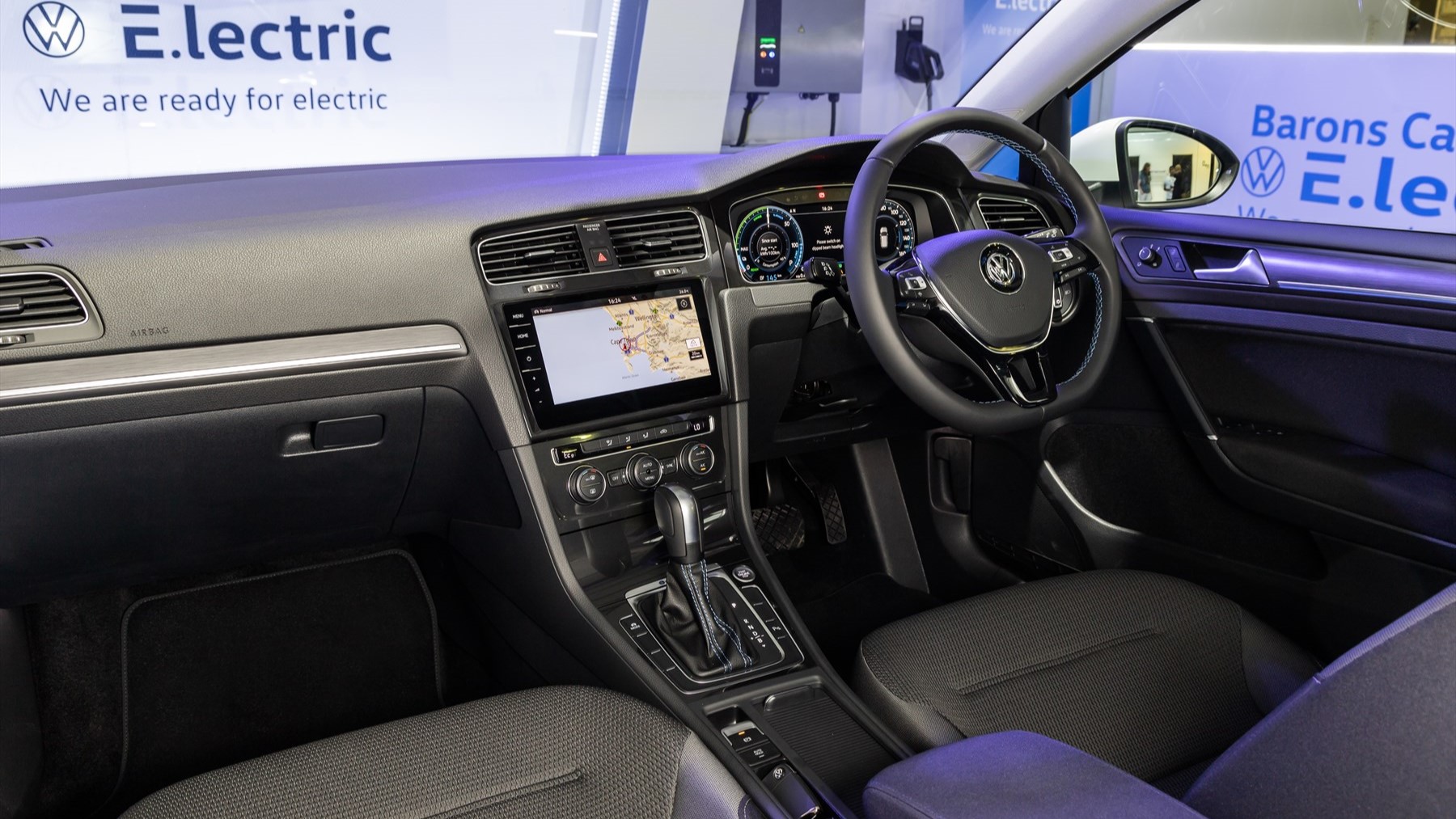
It isn’t fast
A modest electric motor spins 100kW and 290Nm of torque to the front wheels.
At low-speeds, the e-Golf is terrifically responsive to throttle inputs, feeling much faster than its claimed 0-100km/h time of 9.6 seconds. As you’d expect from an electric car, it gets away smartly from traffic lights and very confidently hunts for those gaps in traffic.
Top speed is limited to 150km/h and above 120km/h, the energy use increases significantly.
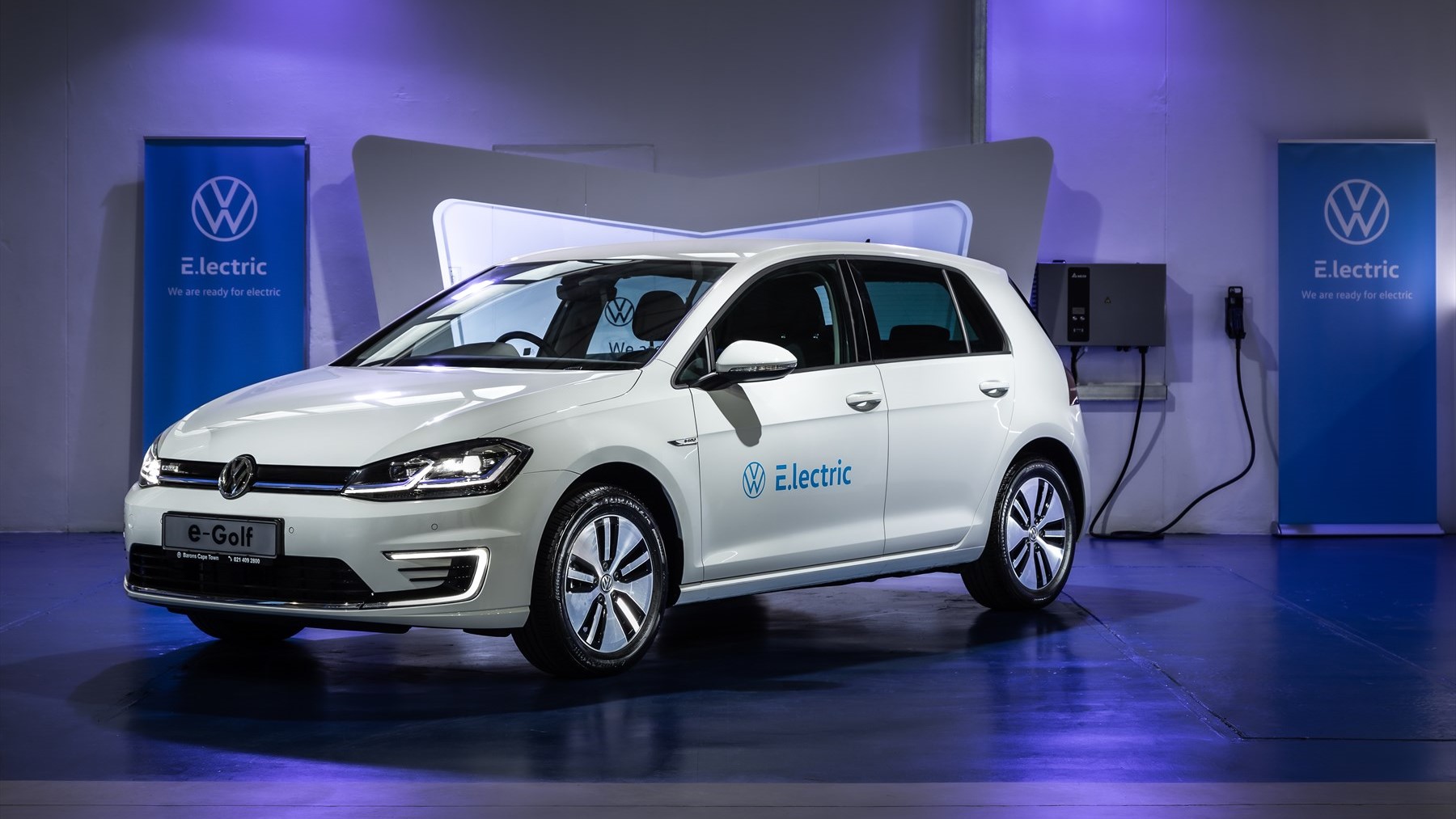
More of its mass, is lower down
What are the debits of this electrified version of the previous-generation Golf?
The overall weight and suspension balance aren’t what VW originally intended for Golf7’s MQB platform, but it feels paradoxically more planted. That is thanks to a lower general centre of gravity.
Its battery pack location and lack of a traditional petrol engine above the front axle, helps to lower e-Golf’s centre of gravity.
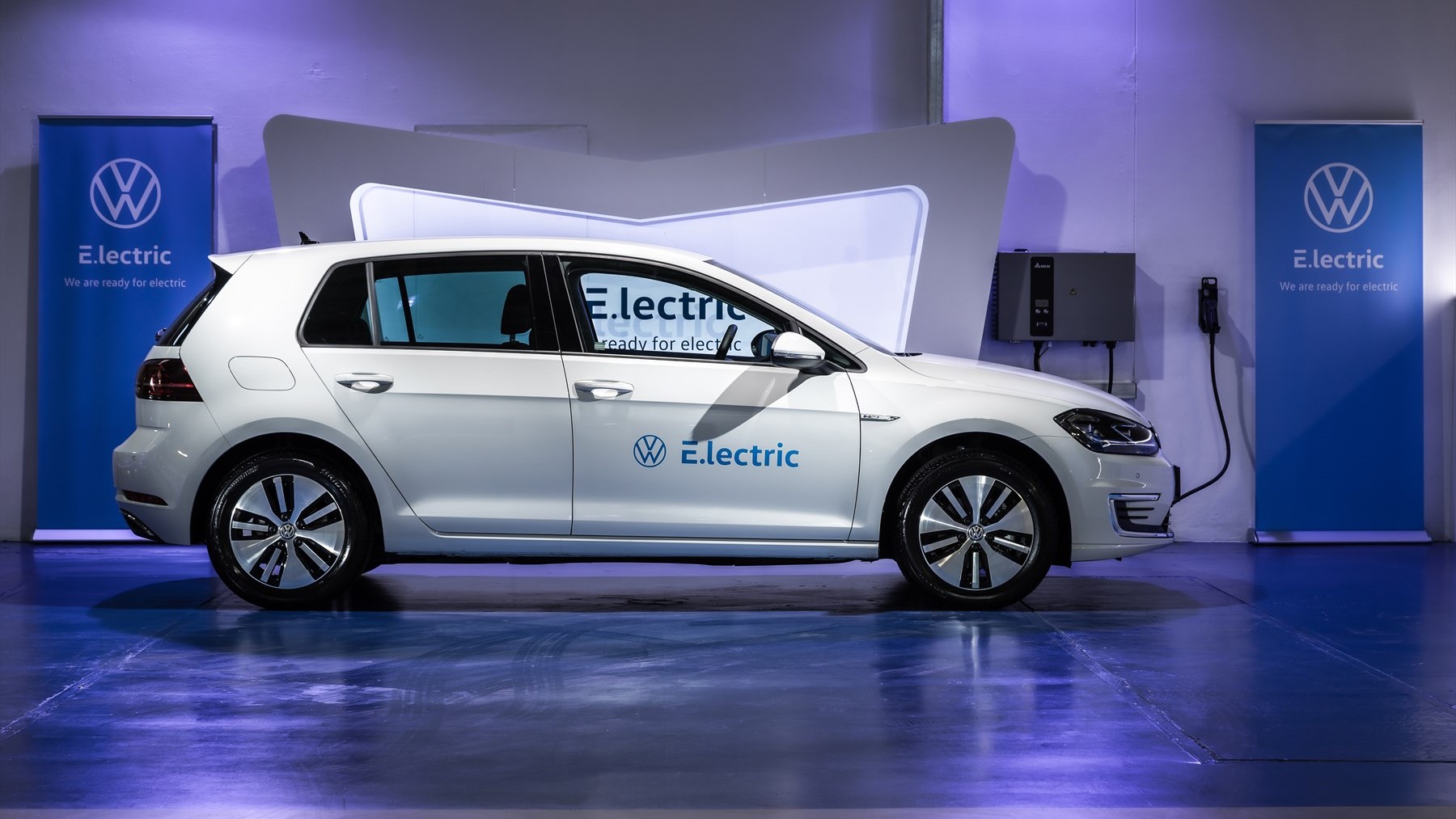
E-Golf range numbers
The tyres are an issue within the South African driving context.
Range is the fundamental design objective of any electric vehicle product team. And to achieve the best possible mileage from a single charge, engineers seek tyres with the lowest possible rolling resistance, sacrificing grip.
In wet road surfaces, there were moments where I could feel the braking inputs edging towards overwhelming the available grip from that ultra low-resistance. But this is true of all current electric vehicles, which roll tyres that prioritise efficiency instead of grip.
Charging convenience? VW very transparently quotes 150km as a usable range figure and our journeys confirmed that in the e-Golf. Fully charged, it registered a theoretical indicated range of 216km, but when you add some rolling South African city topography or a headwind, that range figure trims.
This is an electric vehicle for city commuting. And it does that with great confidence and comfort. E-Golf’s small battery also does not require much time to recharge.
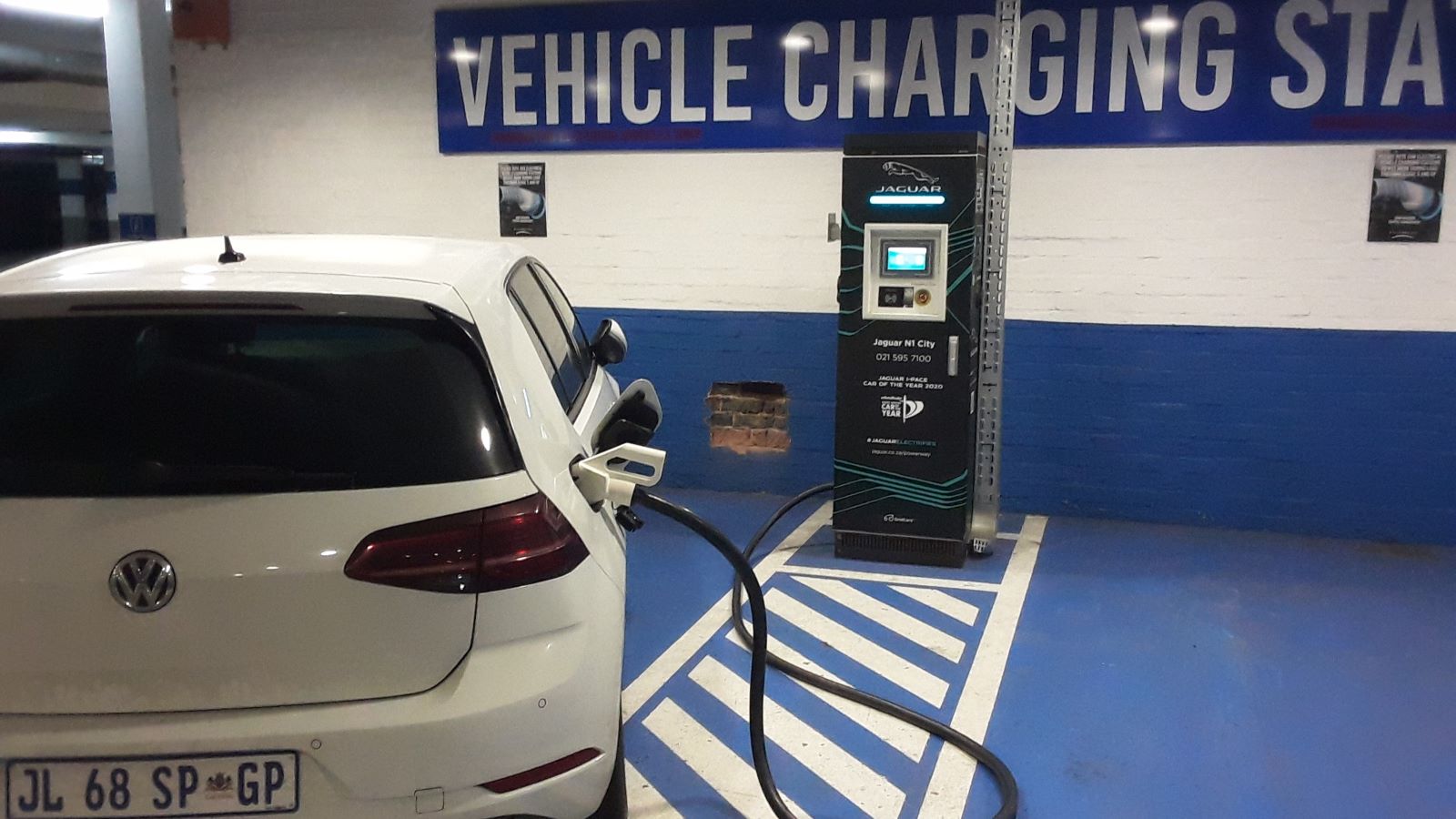
E-Golf is a great EV for tech-conservative drivers
I used the Willowbridge shopping mall’s fast-charging station, where the e-Golf consistently powered-up from 50km of range to full-battery capacity in only 45minutes. About the time required to have a coffee and respond to some remote work emails.
The consensus is that any petrol or diesel vehicle architecture converted to electric drive, is a woeful compromise. But e-Golf is evidence to the contrary.
For those drivers who prefer the feel of traditional cabin layout and functionality and only need a battery car for city commuting, there is a terrific simplicity and familiarity to the e-Golf driving experience. It proves that an overengineered vehicle platform can be adaptable beyond its original design intention.


